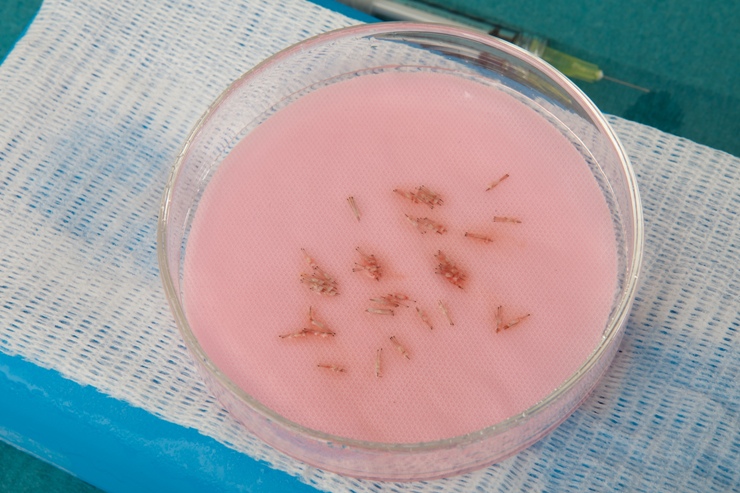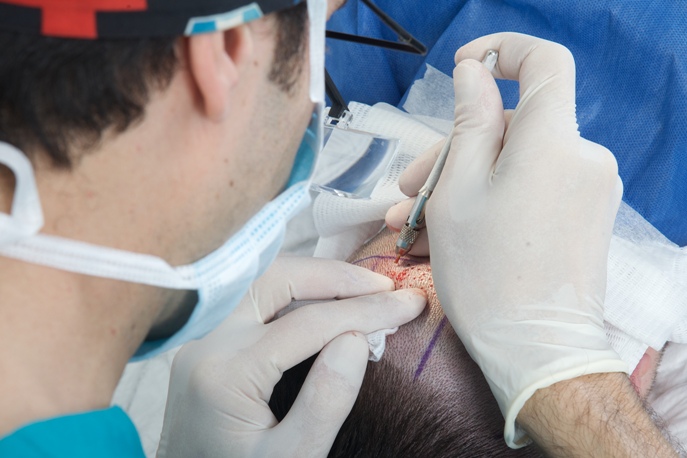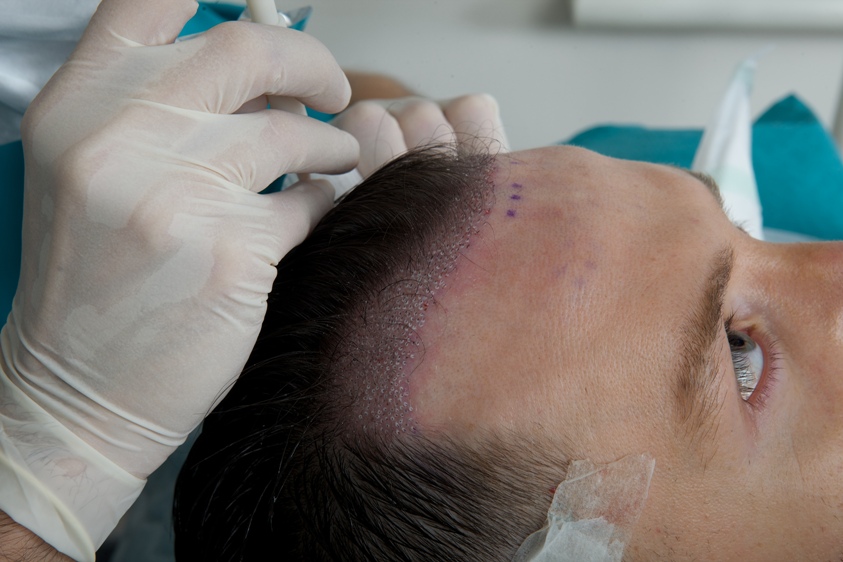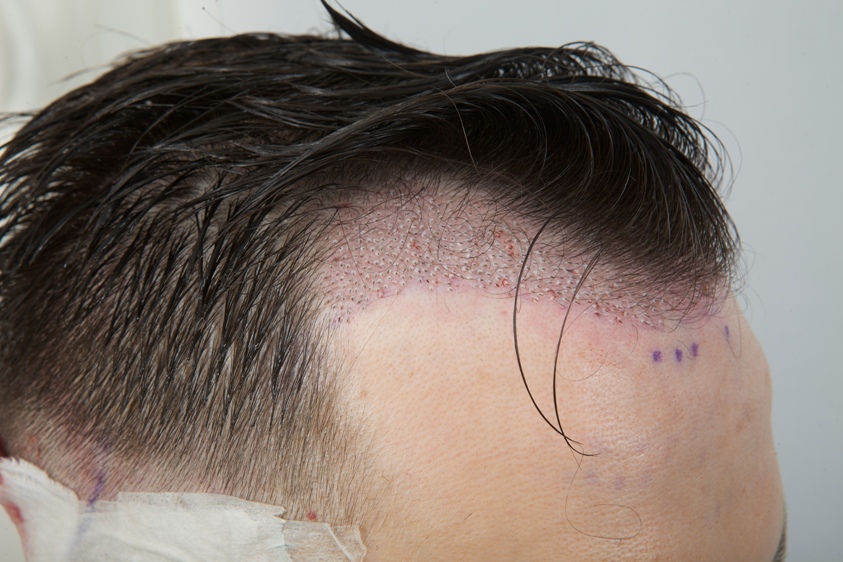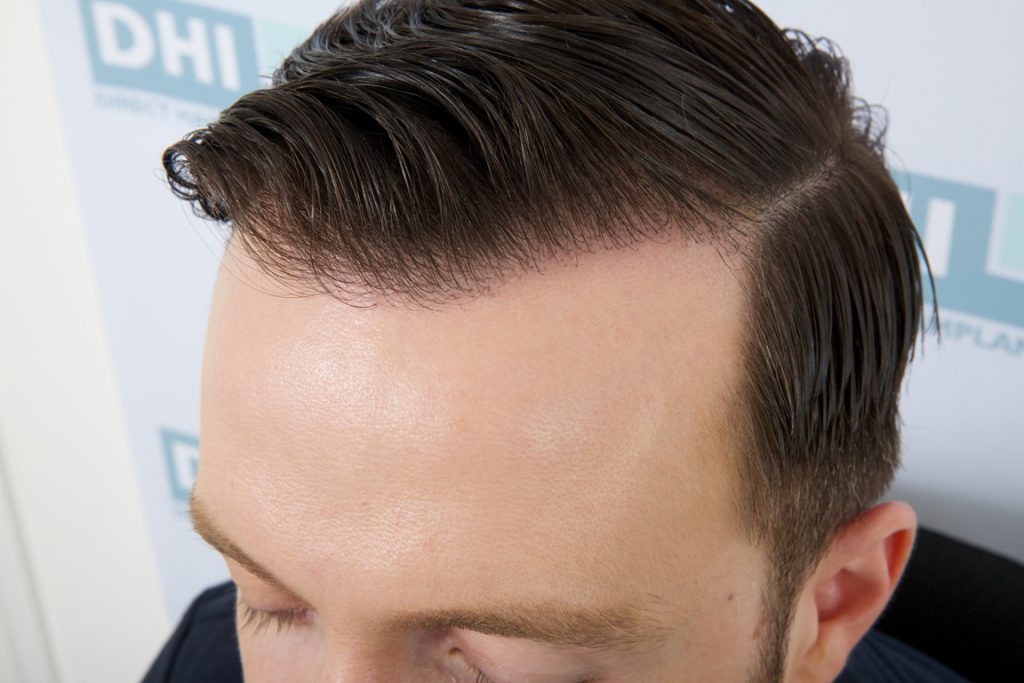DHI Medical Group featured on Daily Mail

One of our patients, shared his experience about his hair loss treatment at DHI Medical Group, and his story got featured on the homepage of Daily Mail website! Bellow is the article by James Draper:
Would you have a ‘lunch-hour’ hair transplant? What happened when one man had the £7,000 procedure
I never thought I’d be the type of man to have a hair transplant.
Sure, the likes of James Nesbitt, Robbie Williams and Louis Walsh have gone under the knife to bolster their barnets, but I always thought hair loss should be handled with a little less fuss – and a lot more stoicism.
Not least because, at 34 years old, I still had (what could truthfully be described as) a full mane – certainly no bald spots, just a very slight receding hair line.
And that’s official. According to the Norwood scale, the industry-wide guide which measures the stages of male pattern hair loss, I was only just in category two, which is the very first rung of the ladder.
Although James Draper, 34, was not going bald, he had a receding hairline and so decided to undergo a ‘lunch hour’ hair transplant procedure. He is pictured before having the procedure
The treatment is called ‘direct hair implantation’ and costs an average £7,000. Mr Draper is pictured after having the procedure
Hair follicles are removed from a ‘donor area’ at the back of the head which is normally unaffected by hair loss
Thankfully, nature had not intended for me to look like a billiard ball.
But, when on a journalist commission to find the hot new trends in male cosmetic surgery, I stumbled across a procedure that has since been dubbed the ‘lunch hour’ hair transplant.
This is because of its discreetness and simplicity: DHI or, to give it its full name, direct hair implantation.
Too good to be true? It certainly seemed so.
To test this theory I posed as a keen customer during consultations with several different companies, generating vastly different results.
One Harley Street doctor quoted me £17,000 and said I’d need several high-cost operations.
Another, based in mainland Europe, offered his services for ‘just’ £10,000, but the price of back-and-forth international travel wasn’t included.
Then, a more local practitioner suggested I undergo the old-fashioned ‘strip’ transplant, which involves cutting large chunks of the scalp away and replanting them.
A procedure which isn’t just fantastically painful, but also unsightly: leaving a huge, tell-tale horizontal scars at the back of the head.
Hardly ideal if I wanted something low-key, which is surely the watchword of any procedure. Especially for men.
But then, through my love for sport, I found DHI Medical Group – who, over 40 years, have worked with the likes of cricketer Phil Tufnell and Dutch International football Ronald de Boer.
Having met both of them on separate occasions, they were both enthusiastic about their experience and, more importantly, had impressive hairlines to prove it.
So I delved a little deeper – and booked in with a consultant at their New Cavendish Street branch in London, who not only detailed what would happen during the seven-hour procedure, but also guaranteed lifetime hair growth and 100 per cent safety.
This, they assured me, would be achieved by extracting hair follicles individually from the donor area (the lower back of the head that’s rarely affected by baldness), using a specifically-designed tool with a diameter of less than 1mm to avoid scarring.
Then, the follicles would be implanted one-by-one directly into the region suffering hair loss, creating cumulative density. No surgery, no stitches, no overnight stay.
It seemed too good to be true, but within days I was booked in.
My transformation started with a military style haircut.
Mr Draper said the ‘worst’ part of having the procedure was being flipped on to his front so that the hair follicles could be removed from the back of his neck. ‘Hardly scary stuff,’ he said
Historically, men have been forced to shave their entire heads in order for doctors to collect fresh roots from growth areas.
But my surgeon offered me the option of a fashionable ‘blend’ cut, which – at worst – looked like I should be in Shoreditch.
Then, it was into the clinic room – which is where the magic happens. Here, they used local anaesthetic to numb the spot where they harvested healthy hairs to be replanted.
This itself was surprisingly painless.
In fact, the worst part was probably having to lay face-down on a surgical table (with my face peeping through one of those embarrassing holes) for so long.
But the procedure – which collected around 10,000 grafts – was gentle and precise, with minimal fuss. Painstaking for the surgeon, yes, but pain-free for me.
A quick lunch break, then it was part two: the implantation.
A few weeks after the procedure the follicles appear to scab. This is unsightly but is a sign the new, transplanted hair is being accepted into the scalp
The border of my original hairline was marked out with a marker pen – leaving a surface area to be filled with the plucked hair.
Flipping me over onto my front, it continued as we had started: while chatting and listened to the radio. Hardly scary stuff.
Intrigued, I watched in a hand-held mirror as my younger hairline suddenly re-appeared across my face.
And, although I hadn’t stayed awake at night grieving it, I was delighted.
The sensation of the hairs being re-planted felt a bit like being prodded in the scalp with a biro, which was a small price to pay for reversing years of cruel shedding.
Why had more people not heard of this?
From this point, with the initial surgery done, I was a new (albeit cautious) man.
Doctors stressed that the first few weeks post-transplant required the greatest care, both in how I kept my scalp clean, but also in ensuring I didn’t damage the grafts.
A year on, Mr Draper says he is extremely happy with the procedure. ‘I forget I even had the work done because the results are so natural – and, likewise, people I meet are none the wiser’
They briefed me on the horror stories of men who’d spent hours having the procedure done – only to bang their head getting into the taxi home, leaving clumps of transplanted hair strands in their hands.
This meant being hyper-vigilant about how I spent my time during the day and night, avoiding sun exposure in the former and sleeping with a head brace to stop potential pillow friction. Showering also had to be done with caution.
Within a fortnight I experienced the unsightly scabbing period, which – don’t panic – isn’t a good look, but is simply the new, transplanted hair being accepted into the scalp.
And, once this cleared up with regular washing, it was all plain-sailing.
Today, one year on, I’m delighted – and pretty amazed.
It’s only now, when I look back at old photographs of myself, that I realise what a difference it has made.
Increasingly, the hair has not only grown longer, but thicker too: assimilating almost perfectly.
Granted, I didn’t necessarily need the procedure doing in the first place – yes, there are men and women who have much more extreme cases of hair loss – but the ease of the procedure made it both practical and safe, not to mention convenient.
So why not?
Now, I forget I even had the work done because the results are so natural – and, likewise, people I meet are none the wiser.
In fact, many of them make reference to my luck of having such good hair genes.
I feel like a new man.
Click here to Book your consultation with our expert doctors

